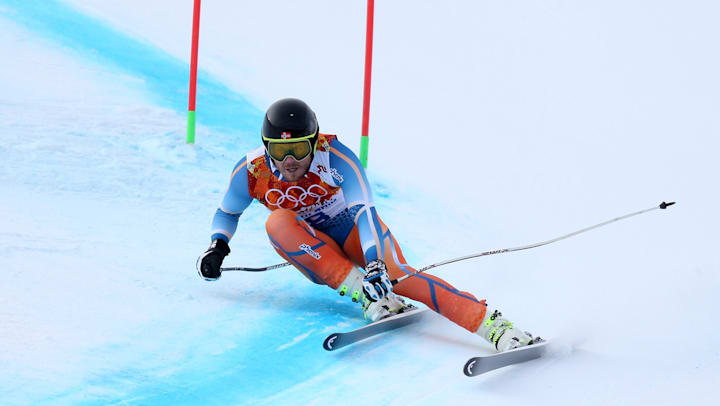- Women's Downhill Skis Clearance
- Downhill Ski Race G Force 2020
- Downhill Ski Race G Force For Sale
- Used Downhill Skis For Sale
Super G vs. Downhill

Do you know something about the discipline of skiing? How about skiing in the Alps? Well, there are two popular disciplines nowadays revolving around Alpine skiing. These are the Super G and the Downhill. Unfortunately, many observers confuse them as one and the same because they simply look exactly similar at a glance. However, these two speed centric skiing disciplines have many differences between them.
Alpine race stock skis by Atomic, Dynastar, Fischer, Head, Nordica, Rossignol and Volkl for every ski racer including junior and kids. Rules for the FIS Alpine Ski World Cup - edition 2018/19 - 1 - RULES FOR THE ALPINE FIS WORLD CUP 1. Organisation Jury according to Art. 601.4 ICR 1.1 Downhill (incl. Combined DH) and Super-G - With voting right: the Technical Delegate the Chief of Race of the Organising Committee the Chief Race Director as Referee, appointed by the FIS. In a downhill ski race, surprisingly, little advantage is gained by getting a running start. (This is because the initial kinetic energy is small compared with the gain in gravitational potential energy on even small hills.) To demonstrate this, find the final speed and the time taken for a skier who skies 70.0 m along a $30^circ$ slope. Gravity is the force that holds the skier to the ground and is also what pulls the skier down the hill. While gravity is acting straight down on the skier, a normal force is exerted on the skier that opposes gravity. As the skier skis down the hill, he or she will encounter an acceleration. While all existing models of SkyTechSport Ski Simulators were great for slalom and GS training, downhill has an entirely different physics due to extreme speeds. The new SkyTechSport machines incorporate powerful drives that recreate downhill G-force effect, simulating intense vibrations and compression effects of up to 150 kg (330 lsb) in load.
First, Downhill has a longer course. The terrains involved are also of many types, may it be flat or steep. With regard to flag placement (also known as poles or gates), they are placed a little closer to each other, although, no two flags can readily be seen together, and there’s no minimum number of flags provided so that the skier can still spot the next flag.
Conversely, there’s a minimum set of flags placed in Super G skiing (also known as Super Giant Slalom). The numbers are usually 30 for the female category, while there are 35 for men. These flags are also widely spaced in a similar way to that of Giant Slalom racing. It’s somewhat tougher, because it involves constant turning. There is less or no straight areas to traverse throughout the course, compared to downhill, wherein the course usually involves one or two straight sections. These sections are the places where the skiers actually do some gliding. Overall, Super G is sort of placed in between the Giant Slalom and the Downhill racing levels. It has borrowed some attributes from both.
Regarding history, Super G was only introduced in the World Cup series, back in 1982, although it was only in the year 1988 when it was taken as one of the official Olympic sports. Downhill’s history, on the contrary, can be traced back as early as 1921.
When talking about the skiing speed, Downhill is regarded as the fastest high speed skiing discipline among all the others. Depending on the course, the skier can reach 81 mph, and some terrains even make it possible for the skier to go as fast as 93 mph max. That’s why participation in this kind of sport really takes a lot of training so that the skier can effectively control their speed, do some jumps, and hasten their overall technical expertise.
1. Downhill is the older high speed skiing discipline compared to Super G.
2. Downhill is considered to be the faster disciple compared to Super G.
3. Downhill’s flag placement is much closer to each other than those of Super G.
4. Super G has a minimum set of flags placed in the course, whereas Downhill doesn’t have any minimum.
5. Downhill’s course has straight sections, which is a rare occurrence in a Super G course.
- Difference Between IHRM and Domestic HRM - November 22, 2011
- Difference Between Heifer and Cow - November 22, 2011
- Difference Between Deacons and Elders - November 22, 2011
a) $26.2 textrm{ m/s}$, $5.35 textrm{ s}$
b) $4.86 textrm{ s}$
c) The difference in times is small ($0.49 textrm{ s}$), which is expected since $v_i << v_f$. Half a second could make a big difference in placements in highly competitive events, such as the olympics, however.
Sign up to view this solution video!
Women's Downhill Skis Clearance
Why is this button here? Quiz Mode is a chance to try solving the problem first on your own before viewing the solution. One of the following will probably happen:
Downhill Ski Race G Force 2020
- You get the answer. Congratulations! It feels good! There might still be more to learn, and you might enjoy comparing your problem solving approach to the best practices demonstrated in the solution video.
- You don't get the answer. This is OK! In fact it's awesome, despite the difficult feelings you might have about it. When you don't get the answer, your mind is ready for learning. Think about how much you really want the solution! Your mind will gobble it up when it sees it. Attempting the problem is like trying to assemble the pieces of a puzzle. If you don't get the answer, the gaps in the puzzle are questions that are ready and searching to be filled. This is an active process, where your mind is turned on - learning will happen!

 Enable Quiz Mode checkbox when editing your profile to re-enable it any time you want. College Physics Answers cares a lot about academic integrity. Quiz Mode is encouragement to use the solutions in a way that is most beneficial for your learning.
Enable Quiz Mode checkbox when editing your profile to re-enable it any time you want. College Physics Answers cares a lot about academic integrity. Quiz Mode is encouragement to use the solutions in a way that is most beneficial for your learning.